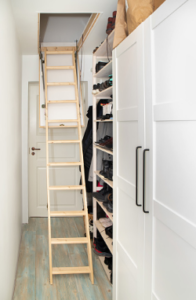Roof access hatches can enhance a building’s structural integrity, add value to home or condo property and make it easier for workers to reach rooftop equipment. They come in several design options, including insulated covers that cut energy costs.
 A hatch’s design depends on how and why it will be used. Some models include locking mechanisms that prevent unauthorized entrants from accessing rooftop equipment. For more roof access hatches design options, check this out.
A hatch’s design depends on how and why it will be used. Some models include locking mechanisms that prevent unauthorized entrants from accessing rooftop equipment. For more roof access hatches design options, check this out.
Ladder Access
If your commercial building requires frequent access to roof equipment or rooftop repairs, it’s time to consider a roof hatch. Instead of dragging ladders around or leaning them against the roof, these doors provide convenient, safe through-ceiling access to your facility’s rooftop.
Ladder access hatches are available in various sizes with openings up to 30″ x 54″. To make entering and exiting the door easier, add a ladder safety post that mounts on the top two rungs of your fixed ladder and telescopes up through the hatch when it’s opened, providing users with a positive hand-hold throughout their egress.
A standard slam latch provides security, and interior or exterior padlock hasp options are also available. Energy efficiency is assured with a fully insulated design that seals between the hatch cover and the curb. And because they’re not visible from ground level, these hatches don’t detract from the aesthetics of your facility.
Stair Access
If staff members will access the roof using a full-sized ship stair, then a larger hatch is required (ship stair access) that opens 30″ x 54″. These roof hatches are more accessible to navigate and permit more effortless movement of equipment and personnel. For more roof access hatches design options, check this out.
Hatches should be insulated with either an integral or a separate foam insulation to be energy efficient and provide sound attenuation. They should have a fully welded design with a positive seal between the cover and curb to prevent water infiltration from wind-driven weather. For safety, they should also have a standard slam latch that includes interior and exterior padlock hasps for security and can be customized with keyed cylinder locks.
Most metal building roof hatches are manufactured from galvanized steel for an initial degree of corrosion resistance, with a primer paint finish. However, stainless steel and copper products are available for applications that require more excellent corrosion resistance or a higher level of aesthetics.
The frequency and reason individuals will access the roof area can also influence the hatch size required. For example, if maintenance personnel carry extensive tools and equipment up to a rooftop to service equipment, a larger stair access hatch may be needed.
For additional security, many hatches are designed to have interior and exterior padlock hasps for easy attachment of locking devices. Hatches can also be equipped to open remotely via an electric motor or winch, providing ventilation and simplifying operation. In addition, most manufacturers offer special finishes to add corrosion resistance or allow a hatch to match a building’s exterior. These options make roof hatches a safer alternative to exterior wall ladders that anyone can easily climb.
Skylights
Whether installing new rooftop equipment or making roof repairs, a properly installed and functioning roof access hatch makes it easier for maintenance and facility staff to get there. Careful consideration of design elements and options helps ensure that the hatch you specify will provide safe rooftop access and trouble-free service for years. For more roof access hatches design options, check this out.
Hatches can be sized to accommodate ladder or stair access, with the frequency and reason individuals need to access the roof area helping determine the size required. A larger hatch with the ship or service stair should be specified if it is necessary to carry extensive tools or parts onto the roof for service.
Many manufacturers offer insulation options for the cover and curb of a roof access hatch to improve thermal performance levels in a building. Louvres can be incorporated into the curb for additional ventilation, and special finishes are available for added corrosion resistance and to match a building’s aesthetic.
